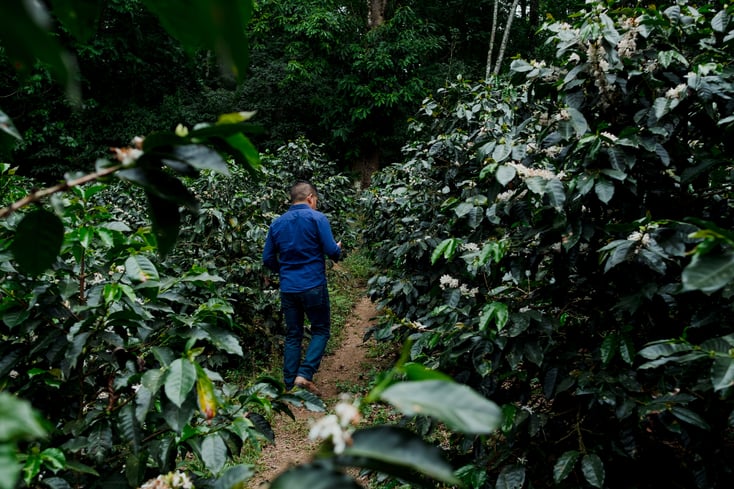
As we mentioned in Part 1 of the Q&A about El Niño with Oscar Fernando Hurtado, Director of Research and Data Analysis for Latin America at Sucafina, this topic has garnered much interest in recent months. In Part 2 of the series, we delve deeper into Central America.
Keep reading to discover what Oscar Fernando tells us about how El Niño will impact this region!
________________________________________________
Sustainable Harvest (SH): Well, Oscar Fernando, picking up the conversation a bit, and for those who missed the first part, tell us, what is El Niño?
Oscar Fernando (OF): Certainly. El Niño is a climatic anomaly that affects us globally and changes precipitation patterns and temperatures. It occurs roughly every 2 to 7 years, on average, and since 1982, it has happened every 3 years. It's an event that we need to get accustomed to and adapt our coffee farming to minimize its impact. That's why we need to analyze it.
SH: As we discussed last time, it's not an event that's happening for the first time, but we can certainly be a bit more cautious moving forward, right?
OF: Absolutely! It affects many countries in terms of reduced precipitation, which can sometimes lead to additional stress. It can lead to droughts and disrupt precipitation patterns. Still, there are other countries that, on the contrary, receive excessive rainfall, which also affects their coffee cultivation.
So, that's why we need to understand this climatic anomaly. So we can be aware of how it will affect us depending on the country we're in, and within the country, the region we're in, because these geographical distributions also have specific behaviors.
SH: Last time, we focused on Colombia, but now we want to explore how it will impact Central America. What's the prevailing climatic pattern regarding rainfall and temperatures in this region, and how can it affect the coffee's phenological cycle?
OF: Well, let's make a comparison. Colombia has two rainy periods and two dry periods, allowing two coffee harvests a year. This differs from regions like Brazil or Central America, where only one harvest is possible due to their distribution of precipitation throughout the year.
In Central America, the rainy season is from May to November, which brings hurricane conditions and higher amounts of precipitation. The dry season begins from November to April, resulting in two distinct seasons. However, during the rainy season, there is a period between July and August when the trend of higher rainfall decreases. This is known as the "canícula" in Central America.
The "canícula" can last around 10 to 20 days and sometimes even longer, and it's a phenomenon that Colombia and Peru don't experience as clearly as Central America. This interrupted rain period involves a reduction in precipitation and an increase in temperatures in these coffee-growing areas.
SH: Speaking of production estimates and how El Niño might change certain things, what are the estimated combined production figures in this region, and how will they be modified or affected?
OF: Let's look at this 2022-2023 harvest. When we include Central America and Mexico, it's around 22 million bags. So, it's crucial to have a clear understanding that this region holds significant weight in production, especially for Arabica coffee.
Within this region, Honduras is the country that carries the most weight in production, along with Mexico and Guatemala. In these figures of 22 million bags, we're also including Peru, as we wanted to include this joint production figure. But if we exclude Peru from the count, we're talking about 19 million bags.
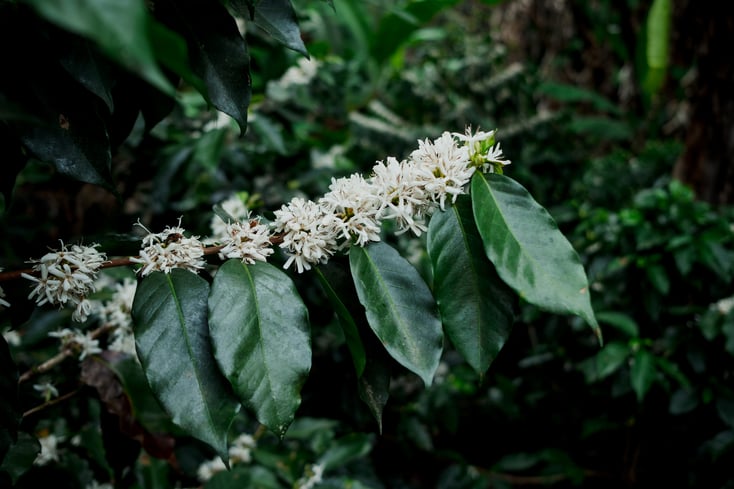
SH: What's the estimated planted area, and how many producers are there in this region, or how is this geographically distributed?
OF: Well, the combined planted area in Central America, including Mexico, is around 1.6 million hectares. This is a very interesting production zone, almost similar to Brazil, with about 1.8 - 1.9 million hectares planted. The combined size of this region is almost the same as Brazil's area.
We have around 800,000 producers in this area, which is significant because we have small-scale farmers in this zone, with coffee farming as their primary economic activity. Environmental factors usually disrupt their incomes and living conditions. And these environmental factors are one of the major contributors to migration in Central America.
SH: Returning to the climate aspect, how is El Niño currently affecting us? What are the current climatic conditions or anomalies that you have noticed?
OF: In 2023, we observed that during the first half of the year in the region, stretching from Mexico to Nicaragua, there was a decrease in precipitation volumes. We've had 30 to 40% deficits in some areas. This precipitation deficit has led to additional stress on the plants. It has affected the distribution pattern of flowering, which is closely tied to dry conditions, creating additional risks to quality.
This condition we've been observing in the first months of the year, and during June, intensified in some countries where we didn't see sufficient rainfall. Generally speaking, the region has experienced lower precipitation volumes. The El Niño condition tends to exacerbate these deficits further and increases the risk of potential damage to coffee farming.
SH: As the rainfall decreases and temperatures rise, these conditions have an impact, correct?
OF: Yes, suppose we connect this with a recurring phenomenon, the canícula, the dry period, during which precipitation decreases. In that case, we will have an additional risk factor.
Specifically, during July and August, we are in the formation and filling phase of many of the products that flowered in the February season.
Remember that flowering in Central America starts in February, intensifies in March, peaks in April, and decreases in May, with very few occurrences in June. That's the flowering events curve in Central America.
Looking ahead at the current cultivation stage and phenological phase, we are in the fruit-filling stage. Therefore, the fact that the dry period is extending, with reduced precipitation during the canícula, significantly increases the risk of damage to the total production.
We discussed how we have lower precipitation volumes, higher temperatures in production areas, and an increased risk of pest outbreaks, like the coffee berry borer or the Indian cricket in that region, due to this climate factor. This creates a real risk for production.
Until now, we cannot generate an alert or panic about this, but let's say it's a factor we want to monitor gradually regarding how the canícula responds to the impact of El Niño.
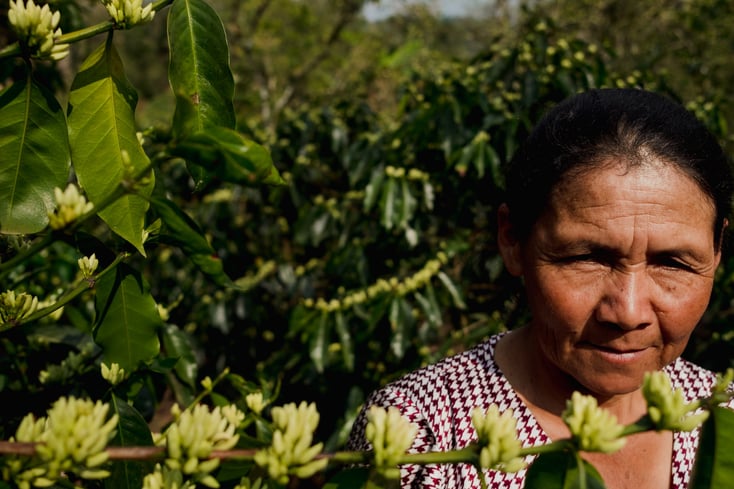
SH: Alright, since you've mentioned these risk conditions that come hand in hand with El Niño, how can these risks be managed? How can producers stay vigilant and identify these risks?
OF: We must start with the fact that this Central American region is susceptible to climate change. It's one of the regions that suffers the most from this change. Research on the most affected areas usually points to Central America, with Honduras, Guatemala, and El Salvador being the countries most affected by these climate and variability issues.
When we combine this with something called the dry corridor in the Central American region, during which periods of extreme drought can last two to four months between November and April, it can, at times, become critically problematic for production, not only for coffee but for many other crops as well.
This dry corridor starts from southern Mexico, in the Chiapas region, and covers Guatemala, El Salvador, a large portion of Honduras, the eastern coast of Nicaragua, and a small portion of Costa Rica. The dry corridor represents around 28% of the affected coffee-growing area.
Approximately 38 departments in this region fall under the influence of the dry corridor, and 33% of the population lives in these high-risk zones. This magnitude demonstrates the potential influence of the dry corridor under normal conditions. You're dealing with a genuinely complex climatic zone when you add El Niño's condition, which tends to exacerbate the water availability issue.
SH: What measures could be taken, perhaps, regarding cultivation systems? Are there any specific agricultural practices that producers could implement to mitigate risks?
OF: This condition is what has led this region of the world to have a higher proportion of shaded crops. As we have prolonged exposure to solar radiation and experience regular drought conditions year after year, having appropriate shade coverage is one of the primary ways to contain the problem. It's essential to protect our crops.
The need for shade coverage will vary depending on where we are in each country. We need to analyze with our technical teams how exposed we are to this condition, whether close to the dry corridor or farther away. This is one of the critical factors.
Another factor is ground cover. Proper soil cover must be managed to prevent moisture loss during these sensitive periods. We usually advise farmers, during pruning, to manage things in a way that retains plant material on the ground. This prevents constant sunlight from radiating onto the soil, which can lead to soil and plant dehydration.
And a key issue is nutrition. Farmers must anticipate nutrition and apply appropriate quantities based on their crop density and the varietals they are cultivating.
One of the things that impact the most in terms of yield is low fertilizer application and low soil water availability. We need these two elements in the soil and the plant to avoid a negative impact on quality and yield because there will be an impact.
For instance, in the case of Colombia, these additional dry conditions are favorable for the crop as long as, in addition to this summer stress, there are intermittent rains and nutritional efforts.
However, in Central America, where we can experience longer dry periods, the situation is more challenging, and we need to pay even more attention to this matter. In this area, the recommended nutritional doses tend to be slightly lower than those in Colombia, not that Colombia's recommendations are the best, but this generates an additional concern, especially in a scenario like the one we have now.
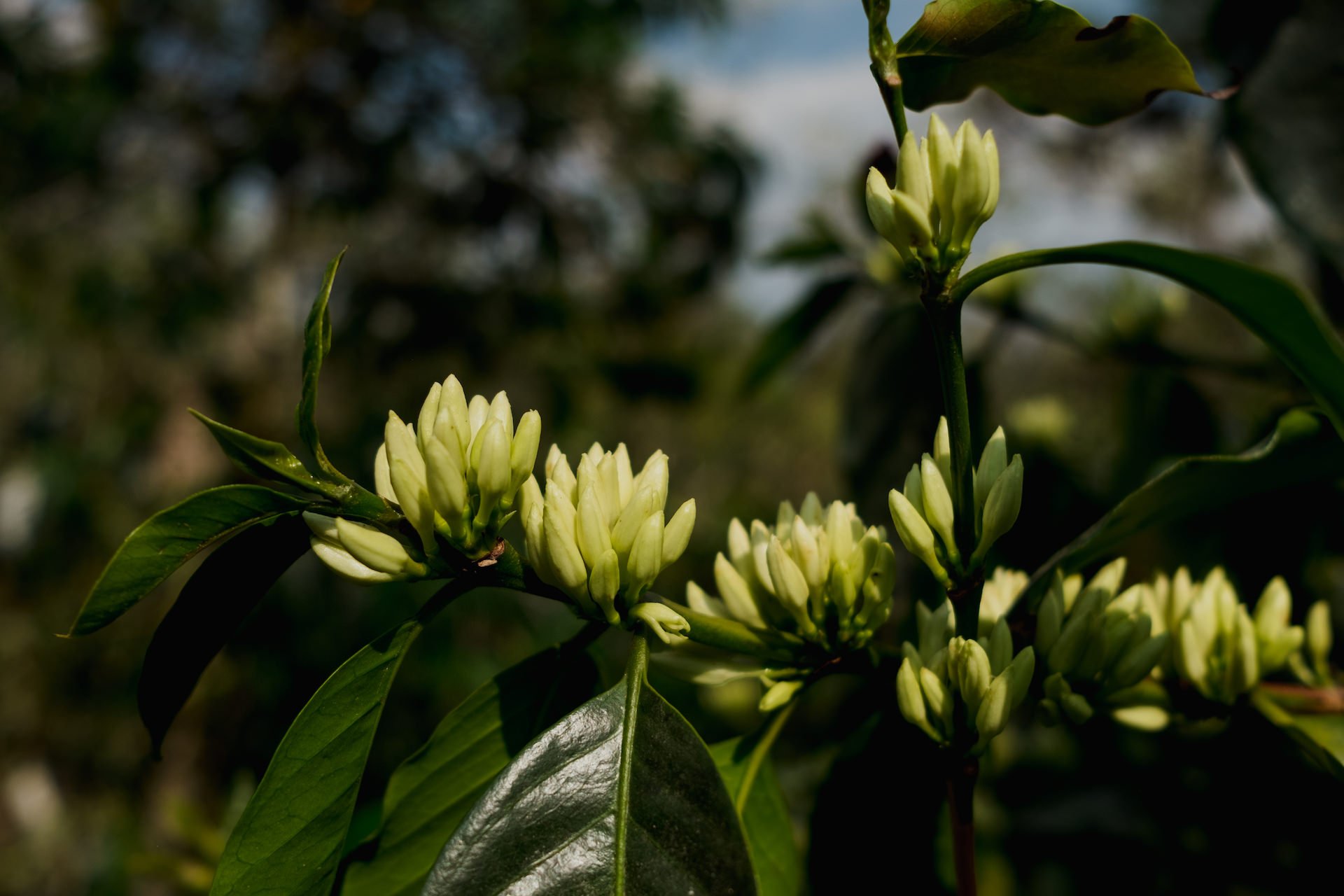
SH: You mentioned pests, correct? It also needs to be considered to take better care and mitigate damage.
OF: Yes, we'll be prepared if we are more preventive than reactive. In other words, if we're frequently monitoring the crops, preventing the Broca indicators from escalating, we can intervene in a specific focus within the lot, control it in time, and avoid using excessive amounts of agrochemicals to manage a large population.
Being proactive is essential. We must consistently control and monitor our land and coffee to prevent these pests from multiplying. As we know, when temperature conditions increase, the life cycle of pests tends to shorten, which means they reproduce more rapidly, and consequently, populations tend to increase. This is why we're seeing more Broca infestations in many regions, mainly because these populations tend to reproduce more quickly.
If we're not keeping up with controls, constantly monitoring and effectively managing the lot when we observe significant infestation levels, things can get out of control, and the actions we need to take become more complex.
SH: Everything we discuss is about what's happening now and what might come. However, I understand that the La Niña phenomenon lasted quite a long time. Does this mean the El Niño phenomenon might not be a matter of just a few months or a year? What are the potential impacts or expectations for coffee production that are coming? How could quality be affected in this region, perhaps thinking a bit more long-term?
OF: Yes, the presence of El Niño tends to last, on average, from 9 to 11 months. However, there have been cases where events have persisted for up to 4 years. So, despite the average being less than a year, it doesn't mean it will always be that way.
One of the important messages we've conveyed to Colombian producers is that if this is a regular occurrence, we should have long-term actions in place.
Through our IMPACT Program, we've been practicing regenerative culture. We've aimed to restore soil nutrition and the biological and mineral aspects we should ensure in the soil. The soil aspect has not been something coffee farmers have worked on extensively, resulting in a lack of awareness of the benefits that soil can offer and its capacity to respond.
We've primarily focused on the vegetative aspect, not so much on the soil. Therefore, in regenerative agriculture, we want to focus on soil recovery for sustainable production, maintaining the crop, and returning soil health and biology to what it should be. We need to restore the number of microorganisms that we should have in these soils over the long term, as they are the ones that will sustain our production.
We must work extensively on that aspect and learn to manage weeds better; we've always tried to eliminate and remove them from coffee farming. However, we need to start coexisting with them and be selective about which ones are more beneficial for us to keep. This reduces the need for intensive soil work and agrochemical application and helps retain the necessary soil moisture.
So, managing weeds and harvest and post-harvest practices, and maintaining a vegetative layer, even if it's a dead layer in the soil, will help reduce the stress on these lands.
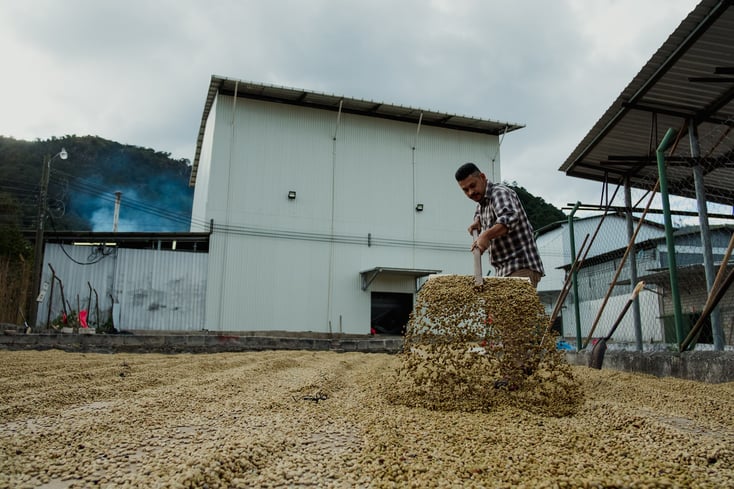
SH: Being proactive rather than reactive, planning a bit more long-term, considering this could last just a few months, less than a year, or even extend. So, it's about being cautious.
OF: Yes, it's essential for planning to be focused. We often see very general recommendations, like a one-size-fits-all solution for producers in a particular country. However, when you analyze the particularities of coffee farming, you realize that producers and production systems differ geographically.
For example, Colombia has many diverse regions, varying altitudes, and different climates. So, a generalized recipe is not suitable. The same happens with some countries in Central America. Even though the climate conditions behave quite similarly, there are differences within each country and region. This is where the producer, organizations, and exporters must make a more focused plan.
For instance, if we're talking about Honduras, then how do we focus on the western region, taking into account the specific climate conditions, precipitation, and temperature that affect that area, which can be quite different from the climate seen in the central regions of Comayagua, Francisco Morazán, and El Paraíso? We need to plan according to our location.
From there, we need to start with specific planning and have 10 different strategies for the 10 different zones. This is the way to understand the complexity of coffee farming. Not all coffee farming faces the same conditions and risk exposure.
Now, when we analyze risk from a climate perspective, we realize that rainfall is not the same in all areas, that not all areas receive the same amount of precipitation, and hurricanes don't affect all regions in the same way when they arrive. So, we need very targeted planning.
SH: You mentioned that in Colombia, altitudes vary; all regions are different. For instance, in Mexico, the Chiapas and Oaxaca regions receive more rainfall compared to the central part of the country, where coffee is also grown. Due to these differences, we cannot offer the exact solution for everyone.
OF: Of course not! For producers in Central America, who might not be familiar with the specifics of Colombia, we talk about two harvests, but it turns out that we have areas in the country where there's only one harvest in the first half of the year and not in the second. Other areas have a harvest in the second half but not in the first. The situation is reversed. There are also regions in central Colombia where we have two harvests, one concentrated in the first half and fewer in the second, while others have fewer in the first and more concentrated in the second.
We can draw a parallel in the case of Central America. Although it doesn't have the complexity of Colombia, there are similar patterns. We've analyzed temperature and precipitation in Western, Central, and Southern areas, and we can start classifying geographically to tailor strategies.
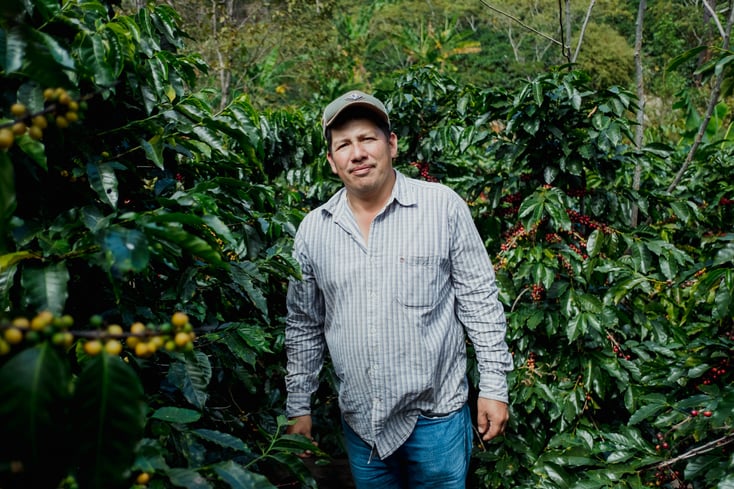
SH: How interesting! Just as we say that every person is unique, every country and every coffee region is different. You can't treat every region the same! Do you have any final message you want to share with the producers?
OF: Well, the message is that we are entering a crucial moment in coffee cultivation across all origins—Colombia, Peru, and Central America. We've been facing a rather adverse market for producers, with prices declining and a complicated market. Now, the producer must focus on what they can do. They can't control prices or influence the climate, but they can begin to adapt and prepare.
These messages about market fluctuations are recurrent. This happens many times; it's cyclic. We experience high and low prices, but right now, we're in a scenario of low prices, which we've been observing for a while. Let's work on achieving higher production in the same area, increased production through good nutrition. We have noticed that many producers neglect nutrition when faced with difficulties, particularly when prices drop. However, it is essential to realize that this can harm future harvests.
As producers, we sometimes lack the ability to think long-term, which puts us at risk of not reaching a break-even point and jeopardizing the sustainability of our business. Educating ourselves and other producers about the volatile nature of the market is essential, as it is unpredictable and can have long-term consequences. We've experienced a season of high prices, and now we're in a period of low prices. Let's work on what we can influence—how to improve productivity and improve it through proper fertilization and addressing issues on time.
In this El Niño scenario, let's be more proactive in nutrition and attempt to dose if necessary, but not sacrifice this crucial work. That's the message we want to convey to producers. We need to be aware that this risk will continue to rise. We must determine how we adapt to the next event in 3 or 4 years because it will happen again. Let's prepare! If we're not ready for this event in 2023-2024, then let's start working for the next one and adapting.
Thankfully, we've seen a trend within the industry towards embracing regenerative agriculture, encouraging producers to restore their soil and adapt to these changing climate patterns. The producer needs to work closely with their technician and exporter to ensure that coffee farming is more resilient to climate change for the upcoming events.
SH: Yes, and touching on that soil aspect, we also spoke with Lalo Pérez from BUNA Mexico, and he talked about soil and organic farming. You can find it here for those who haven't been following that conversation. This seems to be a recurring theme with several producers we work with.
We encourage everyone to dive into this and start researching what they can do or how they can take this into account and implement better practices to improve the soil.
OF: Exactly, that's why we're here—to provide some insight and offer some knowledge. We still have a lot to understand and learn about these climate events. Each country has its own coffee farming and coffee management policies. However, what's important is for the producer to start taking action on their own to help mitigate the impact of these conditions in the future.
SH: Exactly. Well, Oscar, thank you once again. This is a fascinating topic, and we appreciate your time and all the knowledge you've shared with us. It was a pleasure talking to you, and we hope all our friends also enjoyed it and learned a lot!



.png)
